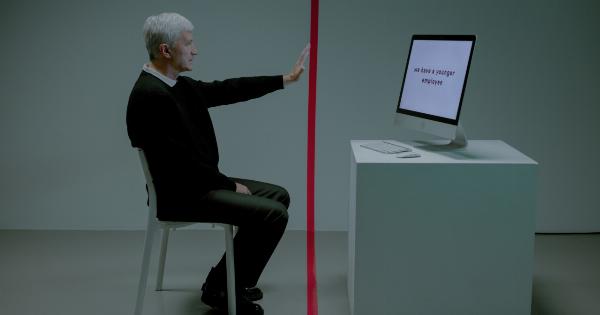We all have bad habits that we’d like to break, but sometimes it can feel like they’re just too ingrained in our lives to be able to change.
Habits are behaviors that we’ve repeated so often that they’ve become automatic and subconscious, and breaking them can be a real challenge.
But, it’s not impossible. Even if you’ve had a bad habit for over a decade, you can still break it with the right mindset and techniques.
In this article, we’ll explore some practical tips and strategies that will help you break the bad habit you’ve had for way too long.
1. Identify the Root Cause
The first step in breaking any bad habit is to identify why you do it in the first place. What triggers you to engage in this behavior? What do you get out of it? Understanding the root cause of your habit is essential if you want to change it.
Take a moment to think about your bad habit and try to pinpoint when and why you started doing it.
Was it a coping mechanism for stress or anxiety? Did it help you feel more in control? Once you know why you started the habit, you can start to develop healthier ways of coping with those underlying issues.
2. Set Clear Goals
If you want to break a bad habit, you need to set clear, achievable goals for yourself. Don’t just say, “I want to stop doing this.” Instead, be specific about what you want to achieve, and give yourself a deadline.
For example, “I want to stop biting my nails by the end of the month.”.
Setting clear goals helps you stay focused and gives you something to work towards. It also makes it easier to track your progress and celebrate your successes along the way.
3. Replace the Habit with a Positive Behavior
Breaking a bad habit often requires filling a void that the habit leaves behind. If you don’t replace your bad habit with something else, you’ll likely find yourself falling back into the same old patterns.
Think about what you can do to replace your bad habit with a positive behavior. For example, if you want to stop eating junk food, you could replace it with healthy snacks like fruit or vegetables.
If you want to stop smoking, you could replace it with something like meditation or exercise to help manage your stress.
4. Find a Support System
Breaking a bad habit can be challenging, so it’s essential to have people in your corner who understand what you’re going through and can encourage you along the way.
Talk to your friends and family about your goals and enlist their support. You can also seek out a mentor or coach who can help you stay accountable and provide guidance when you’re feeling stuck.
5. Create a Habit Loop
Habits are formed through a process called the “habit loop,” which consists of three parts: the cue, the routine, and the reward. Understanding this process can help you break your bad habit.
Start by identifying the cue that triggers your bad habit. Then, develop a plan to interrupt that cue and replace the routine with a positive behavior. Finally, give yourself a reward for engaging in the positive behavior.
6. Practice Mindfulness
Mindfulness is the practice of being present and aware of your thoughts, feelings, and sensations.
It’s a powerful tool for breaking bad habits because it helps you recognize when you’re at risk of engaging in the behavior and gives you the space to make a different choice.
Try to practice mindfulness throughout the day, paying attention to your thoughts and feelings. When you notice yourself feeling triggered to engage in your bad habit, take a moment to pause, breathe, and choose a different behavior instead.
7. Keep a Journal
Keeping a journal can be a powerful tool for breaking bad habits. Write down your thoughts and feelings about your bad habit, and track your progress as you work to change it.
Use your journal to reflect on your successes and challenges, and to identify what strategies are most effective for you. Writing things down can also help you stay accountable and committed to your goals.
8. Celebrate Your Successes
Breaking a bad habit is a significant accomplishment, and it’s essential to take time to celebrate your successes along the way.
Set up small rewards for yourself when you reach certain milestones, like a nice dinner out or a relaxing weekend away. Celebrating your successes can help keep you motivated and remind you of how far you’ve come.
9. Be Kind to Yourself
Breaking a bad habit can be challenging, and it’s essential to be kind to yourself along the way. Remember that change takes time, and setbacks are a natural part of the process.
If you slip up and engage in your bad habit, don’t beat yourself up. Instead, use it as an opportunity to learn and regroup. Remember that every day is a new chance to make positive choices and that you’re capable of change.
10. Get Professional Help if Needed
If you’re struggling to break a bad habit, don’t be afraid to seek professional help. A therapist or counselor can help you develop strategies for changing your behavior and provide you with the support you need to succeed.
Remember that breaking a bad habit is a journey, not a destination, and it’s okay to ask for help along the way.
Conclusion
Breaking a bad habit that you’ve had for over a decade can be tough, but it’s not impossible. With the right mindset and strategies, you can overcome any bad habit and live a healthier, happier life.
Remember to be kind to yourself, set clear goals, and find a support system to help you along the way. Celebrate your successes and remember that every day is another chance to make positive choices that will help you achieve your goals.
Remember that change takes time, but with perseverance and dedication, you can break any bad habit and create a happier, healthier life for yourself.





























